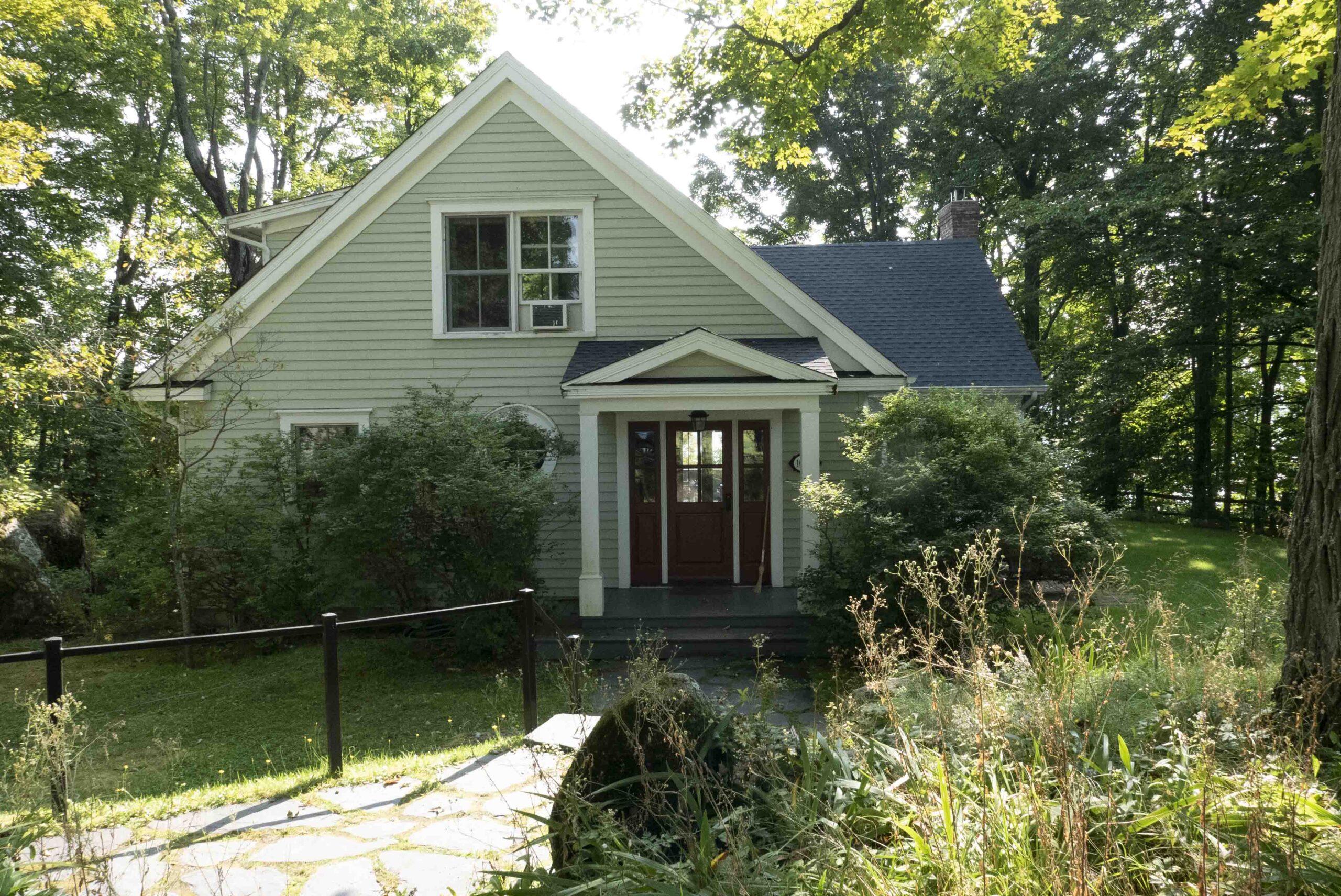Don’t worry, it’s not a border wall we are building, only the foundation wall of the old Glen Villa Inn.
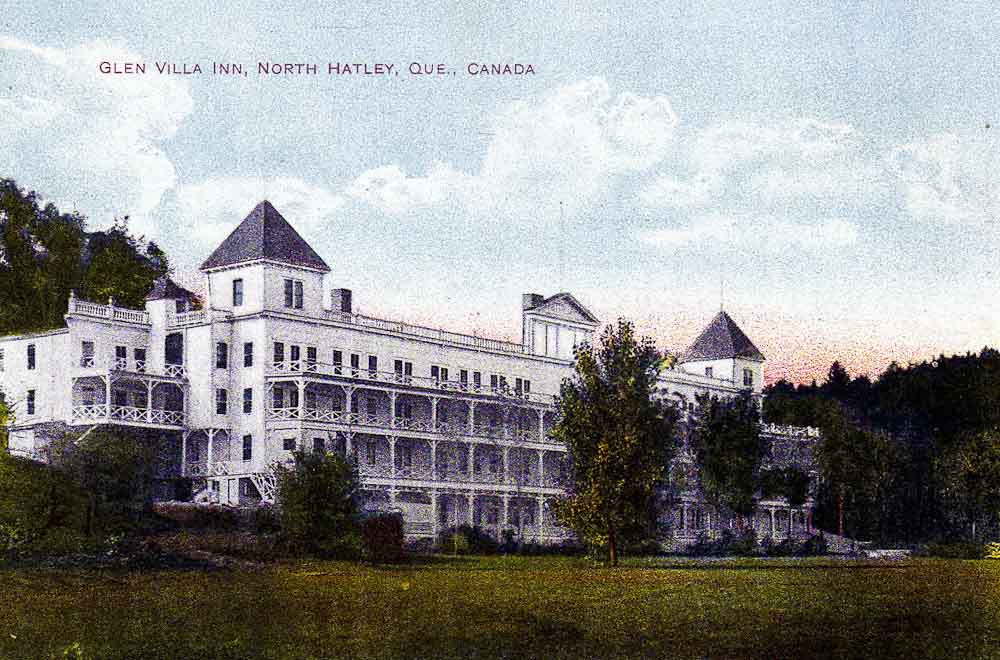
A hand-coloured postcard shows Glen Villa Inn, North Hatley, Quebec.
The grand old resort hotel was built in 1902 and burned down in 1909. In the summer it attracted guests from around North America, particularly southerners who came north to escape the heat and humidity of their home towns. Getting to North Hatley, Quebec was an easy journey then — patrons could board a train at Grand Central Station in New York City and wake up the next morning without ever changing trains.
Tourists began coming to North Hatley in the late 1880s, when memories of the American Civil War were fresh. Perhaps those raw memories combined with the overnight train trip explains the local story that the southern ladies coming to the hotel pulled down the blinds on the train windows so they didn’t even have to look out at the northern states as they passed through.
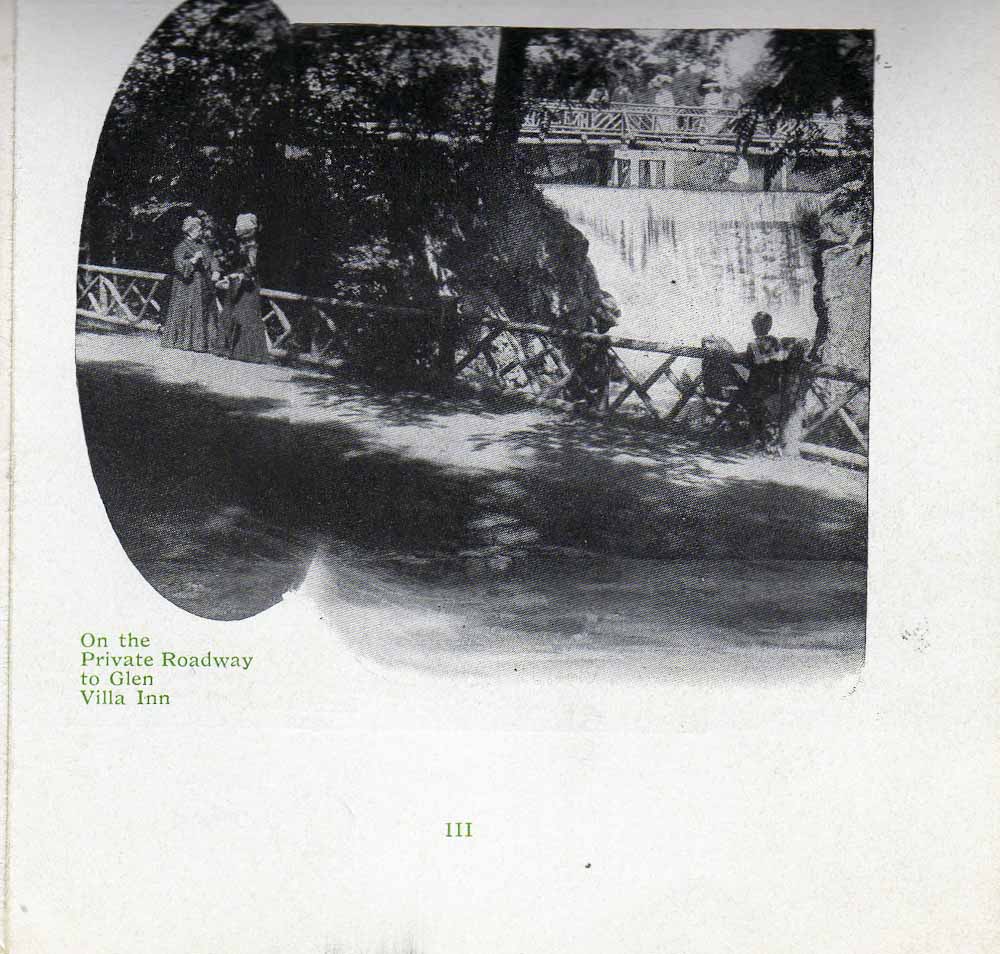
This illustration from the hotel’s brochure shows a southern lady sketching the waterfall at Glen Villa Inn, watched over by two Confederate widows in black.
Regardless of the truth of the story, the hotel played a huge role in transforming North Hatley from a rural village into an international tourist destination. It also marked the landscape where we now live. The pond and waterfall at the entry to today’s Glen Villa were features of the hotel.
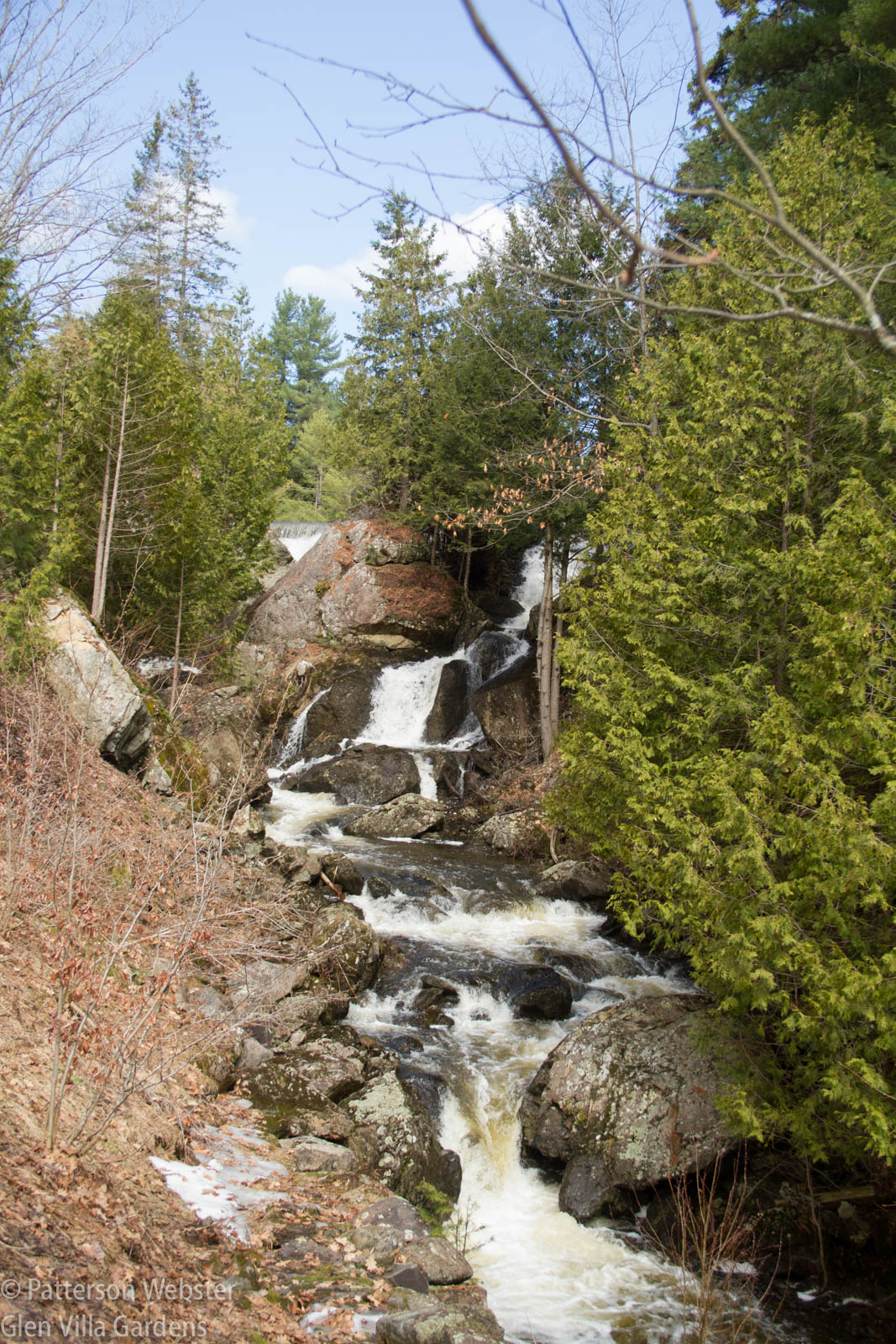
The waterfall looks much the same as it did 100 years ago.
The maple trees that line the bank of the lake were planted when the hotel was new.
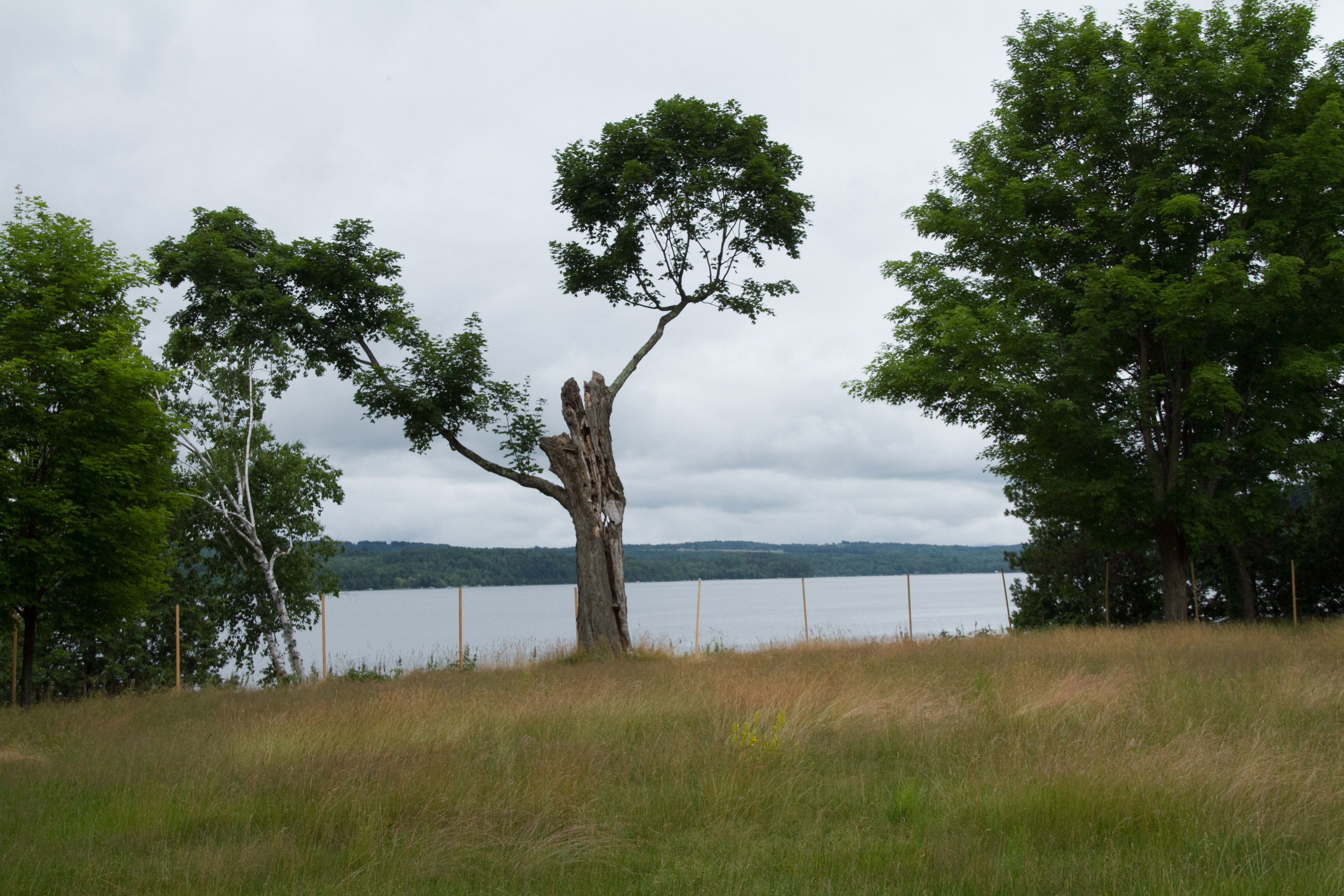
This maple tree was planted over 100 years ago as part of the landscaping for the resort hotel.
The low stone circle that is now the Yin/Yang was in front of the hotel entrance.
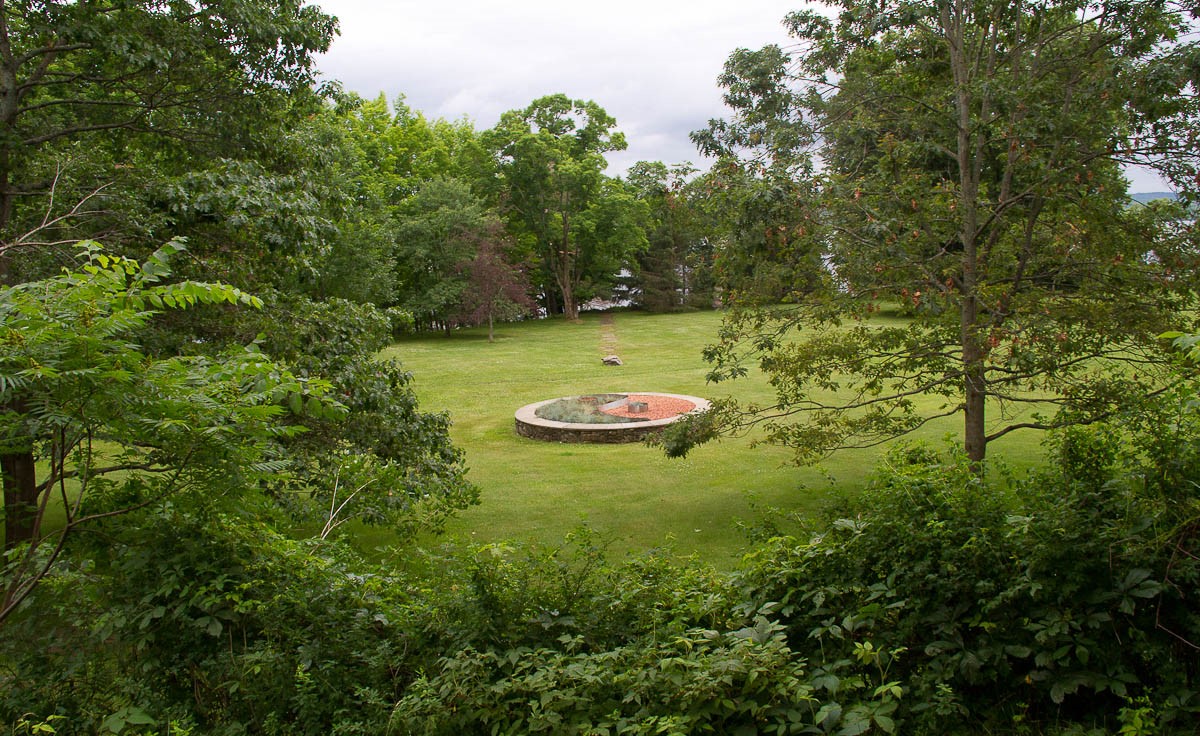
I was standing on top of the hotel’s foundation wall when I took this photo a few years ago.
But the most important reminder of the hotel is the foundation wall of the building itself. When we moved into Glen Villa in 1996, the wall was in reasonably good shape. In 2005 when I took the photo below, lots of the stone wall was visible, even though some of the large rocks were beginning to fall.
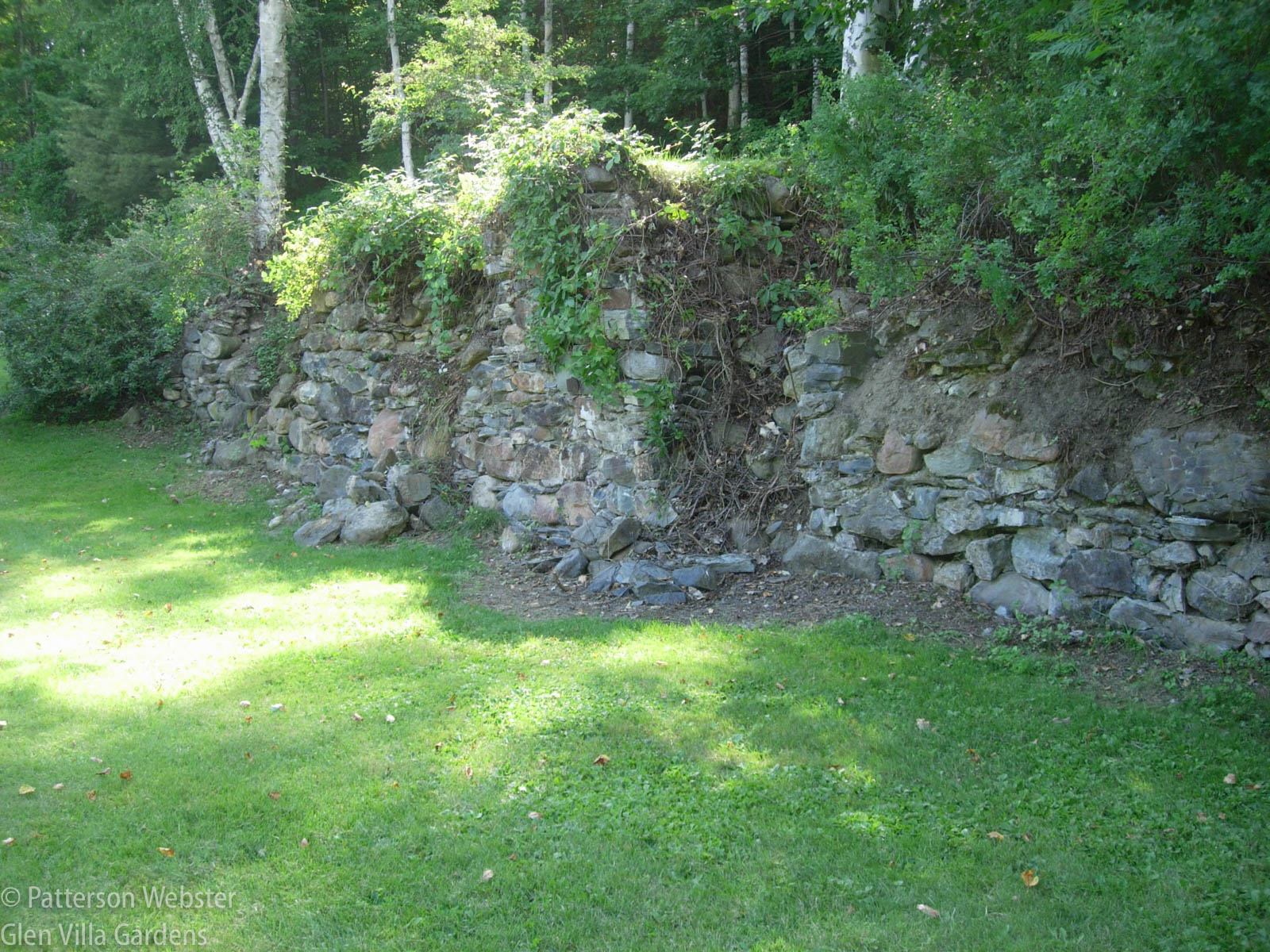
The foundation wall is about 14 ft high at its tallest point.
By 2014 shrubs had overgrown the wall, hiding it almost entirely.
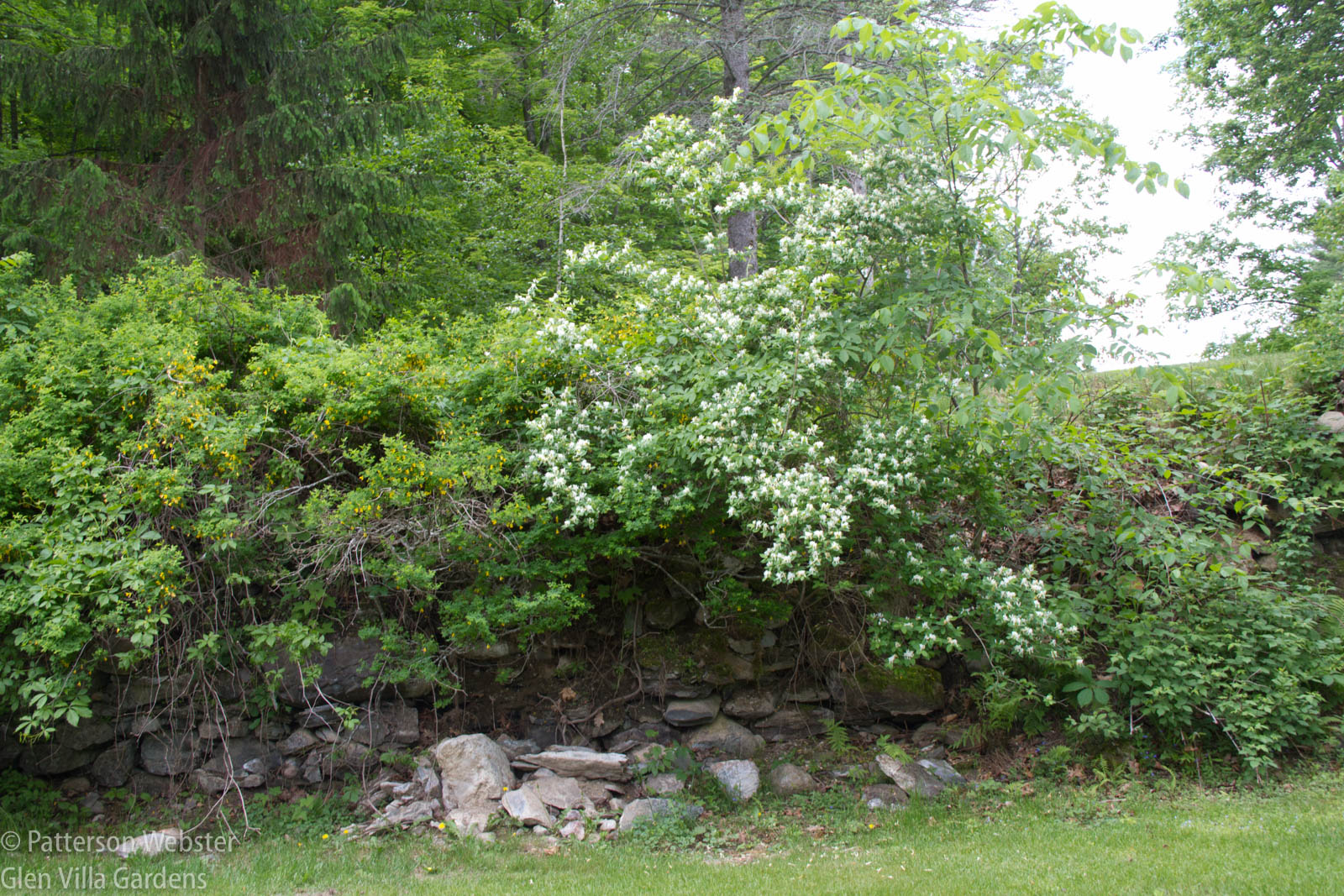
The shrubs hid the wall but their roots kept the stones in place. Or some of them, at least.
For the last few years we’ve been thinking about doing a major repair. Finally this past week the work started. The first job was to remove the vegetation that covered the wall.
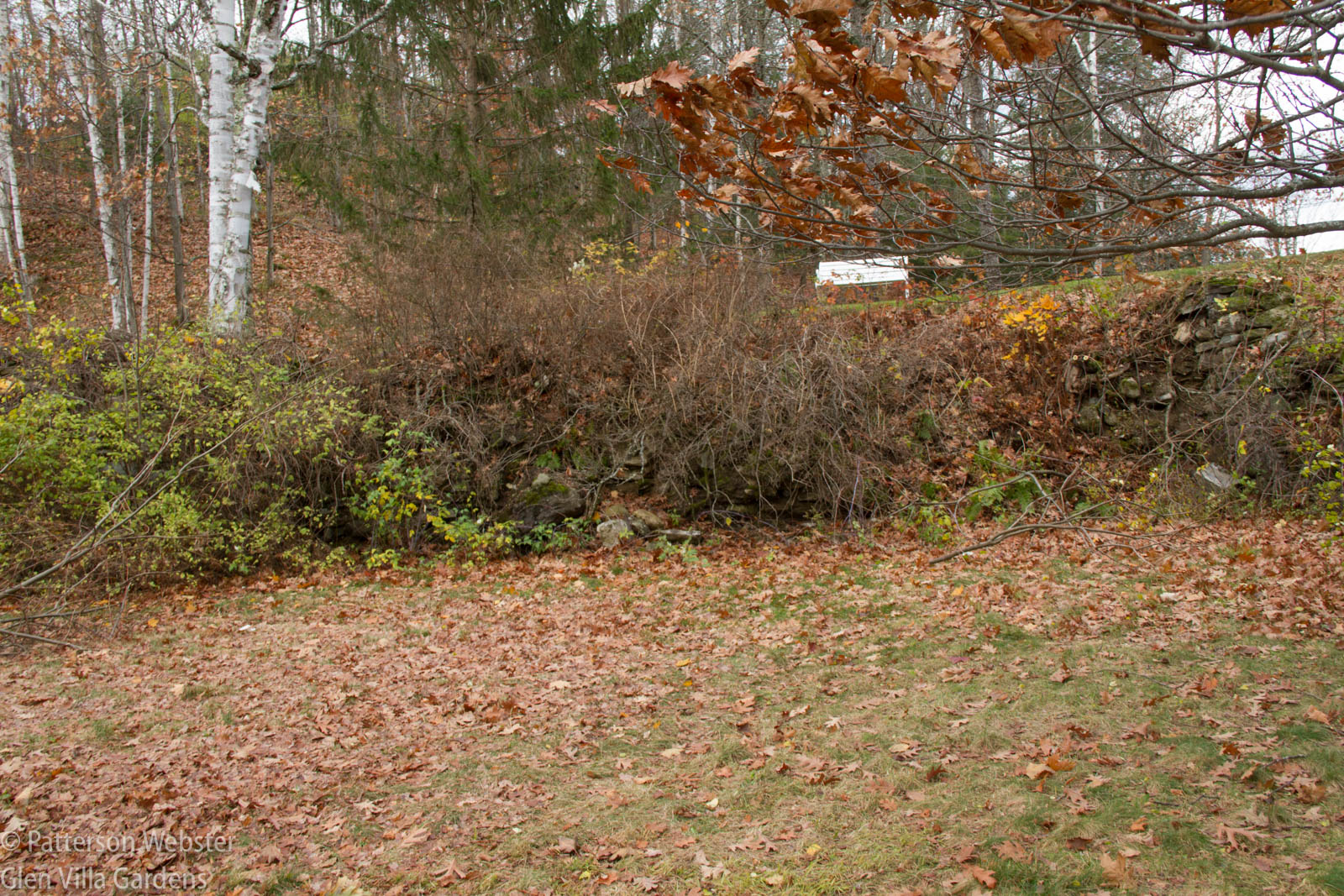
The shrubs were easily cut and the brush removed, leaving a big mess to clean up.
With the brush out of the way, the extent of the work to be done is clear.
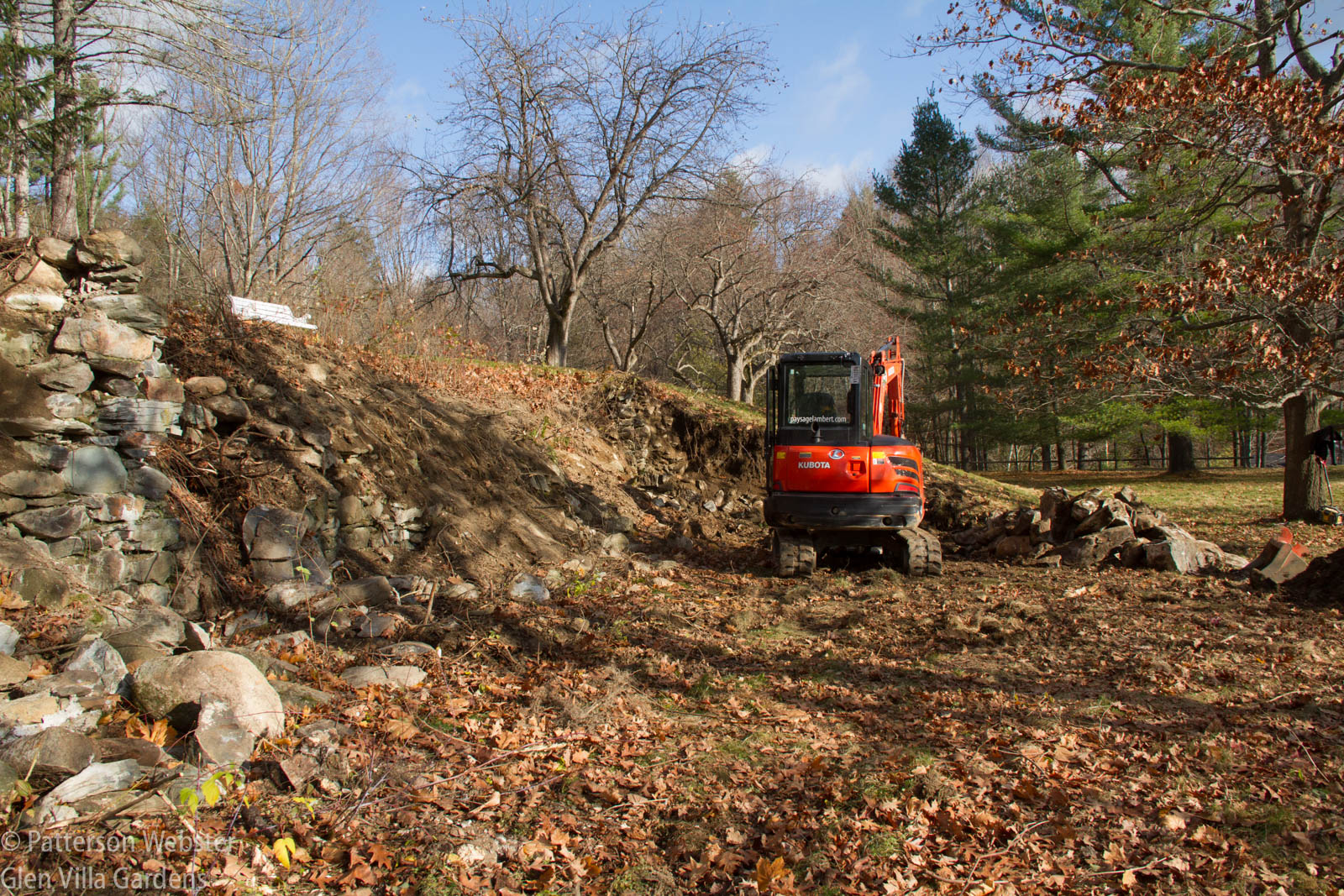
The wall used to extend beyond the mini excavator but it was pushed down and covered up about 50 years ago.
We will have to cut a big birch tree on top of the wall. This is a loss but not a terrible one since the tree is on its last legs. And unless we remove it, we won’t be able to reconstruct the staircase that was hidden by the shrubs.
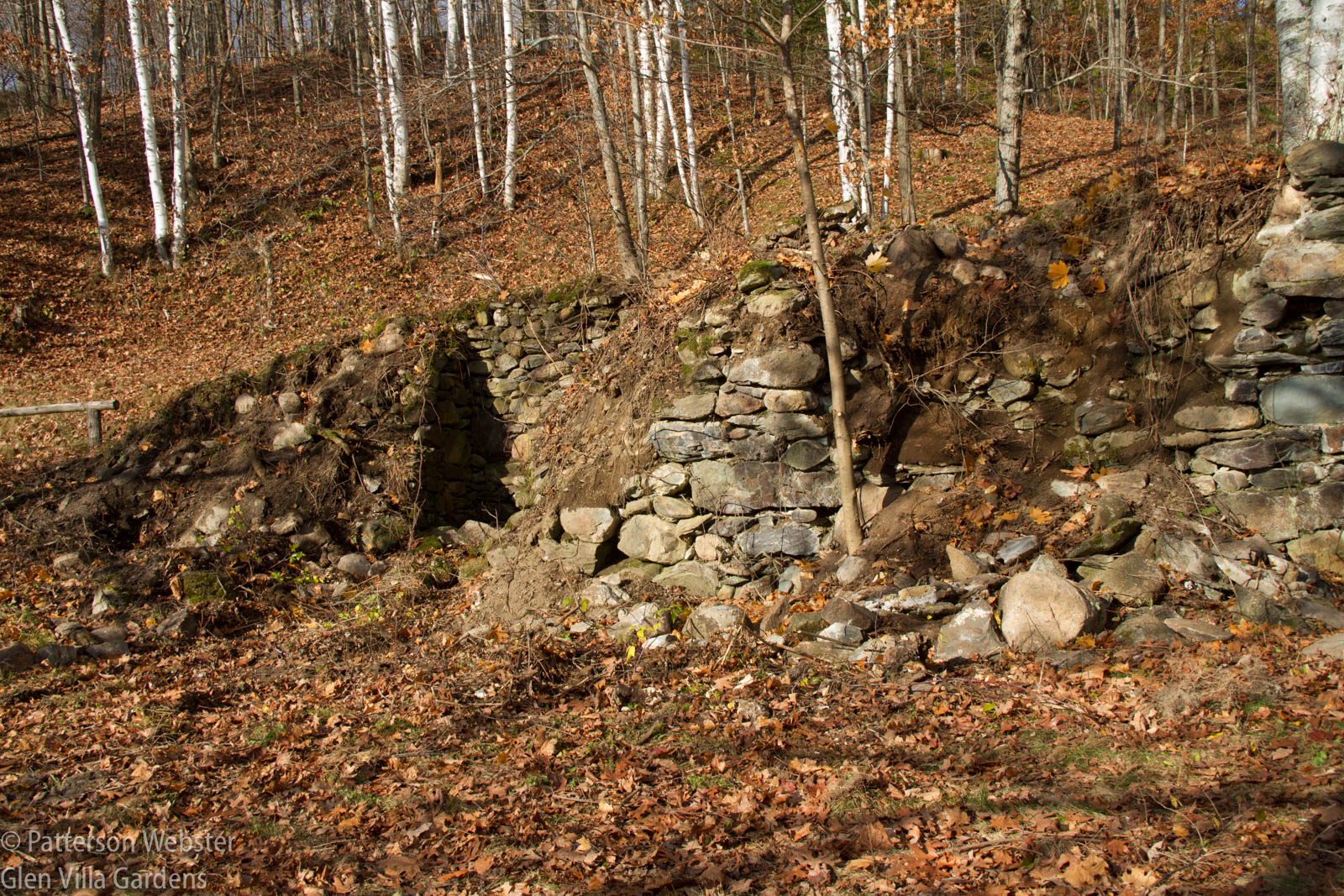
What’s left of the stairs appears on the right of the tiny maple tree you see here. On the left is a small squared-off indentation. We don’t know what it was for.
Completing the job should take two weeks or less. I’ll post again once the work is done.



